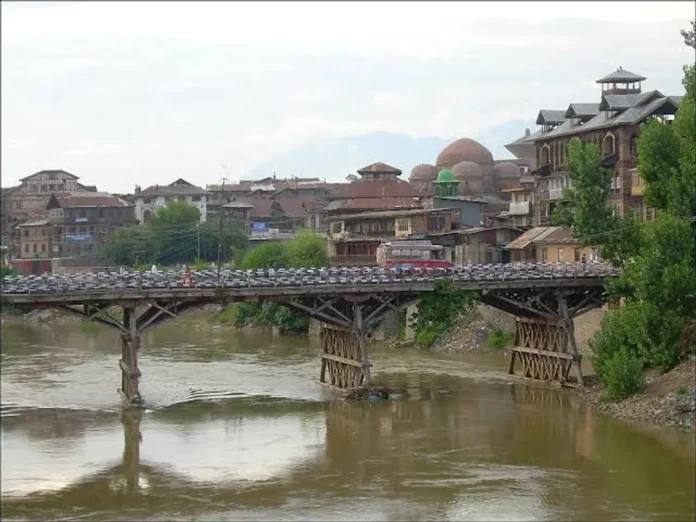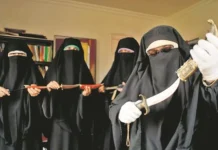By Dwijendra Kumar
The city of Srinagar in Kashmir is also called the city of seven bridges — Amira Kadal, Habba Kadal, Fateh Kadal, Zaina Kadal, Aali Kadal, Nava Kadal and Safa Kadal.
This aspect has been highlighted and explained by Kashmiri litterateur Gauri Shankar Raina in his Hindi book, titled ‘Saat Pulon Ka Shahar’ and published by the National Book Trust.
This book has been translated into Kashmiri too by Brijnath Betab. Work on its English translation is in progress.
In the book, the author highlights the elegant craftsmanship that has gone into construction of these 7 wooden bridges on the river Jhelum centuries back.
The craftsmanship stands out even after bridges have been built in cement parallel to these over the past decades.
Zaina Kadal was built in 1427 AD by Zain-ul Abedin; Aali Kadal in 1415 AD by Sultan Ali Shah; Fateh Kadal in 1500 AD by Sultan Fateh Shah; Habba Kadal in 1573 AD by Sultan Habib Shah; Nawa Kadal in 1666 AD by Nauruddin Khan Bamzai, Safa Kadal in 1671 by Safuddin Khan and Amira Kadal in 1744 by Amir-Uddin Khan.
A few more very interesting facts relating to the bridges find mention in this one of its kind book on Sringar.
For example, Zaina Kadal and Habba Kadal have been the venues for markets where vegetables and items of day-to-day household use were sold.
In the past, during spring, the some person would throw walnuts into the river and these would have to be collected by the children who were good swimmers.
Near the Fateh Kadal, which is numbered as the Third Bridge on the river Jhelum, is situated the Khanquah of Shah-e-Hamdam, dating back to 1400 AD.
Shri Ram Shaiv Trika Ashram, which is frequented by many devotees, is also situated near the bridge.
The book delves into the past of the Kashmir region and talks about its spiritual, literary, and artistic magnificence.
It also gives a brief description of famous tourist places in the city, including Dal Lake, Wular Lake, Shalimar Bagh, Nishat Bagh, etc., fairs and festivals, and numerous religious places such as mosques, temples, churches, etc.
Many cultural influences blend in Srinagar. A variety of customs and traditions exist here. It has been witness to the rule of many kings and presence of various social and cultural values, the book states.
Worth a read for anyone interested in the history of India as well as its top tourist destination, Srinagar.








